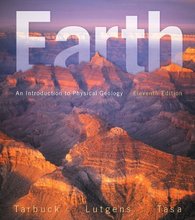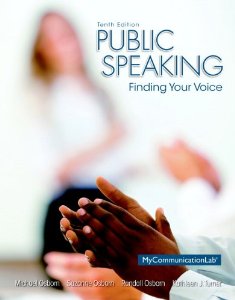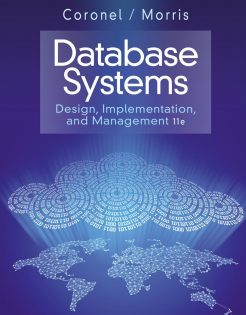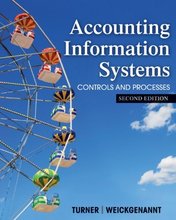Description
Earth An Introduction to Physical Geology
Earth An Introduction to Physical Geology Tarbuck Lutgens Tasa
Earth An Introduction to Physical Geology Tarbuck Lutgens Tasa 11th
Earth An Introduction to Physical Geology Tarbuck Lutgens Tasa 11th Test Bank
Earth An Introduction to Physical Geology Tarbuck 11th Edition Test Bank
***THIS IS NOT THE ACTUAL BOOK. YOU ARE BUYING the Test Bank in e-version of the following book***
Name: Earth An Introduction to Physical Geology
Author: Tarbuck Lutgens Tasa
Edition: 11th
ISBN-10: 0321814061
Type: Test Bank
– The test bank is what most professors use an a reference when making exams for their students, which means there’s a very high chance that you will see a very similar, if not exact the exact, question in the test!
– The file is either in pdf, doc, rtf or zipped in the package and can easily be read on PCs and Macs.
– Delivery is INSTANT. You can download the files IMMEDIATELY once payment is done.
We also faced similar difficulities when we were students, and we understand how you feel.
But now, with the Earth An Introduction to Physical Geology 11th Test Bank, you will be able to
* Anticipate the type of the questions that will appear in your exam.
* Reduces the hassle and stress of your student life.
* Improve your studying and also get a better grade!
* Get prepared for examination questions.
* Can save you time and help you understand the material.
This is the quality of service we are providing and we hope to be your helper.
Delivery is in the next moment. Test Bank is accurate.
Prepare to receive your Earth An Introduction to Physical Geology 11th Test Bank in the next moment.
ISBN-10: 0321814061
If you have any questions, or would like a receive a sample chapter before your purchase, please contact us at inquiry@testbankcorp.com
Earth An Introduction to Physical Geology
Earth An Introduction to Physical Geology Tarbuck Lutgens Tasa
Earth An Introduction to Physical Geology Tarbuck Lutgens Tasa 11th
Earth An Introduction to Physical Geology Tarbuck Lutgens Tasa 11th Test Bank
Earth An Introduction to Physical Geology Tarbuck 11th Edition Test Bank
Earth: An Introduction to Physical Geology, 11e (Tarbuck)
Chapter 1 An Introduction to Geology
1.1 Multiple-Choice Questions
1) Which one of the following is a natural disaster?
A) A hurricane forming in the Atlantic Ocean
B) A landslide striking San Francisco
C) A volcano erupting in the Aleutian Islands
D) An earthquake occurring in the Mojave Desert
Answer: B
Diff: 1
Bloom’s Taxonomy: Comprehension
Global Sci Out: 5 & 7
Section: 1.1 – Geology: The Science of the Earth
Focus/Concepts: 1.1
Earth Science LO: 8.1 – Natural hazards result from natural Earth processes.
2) Which culture recorded the earliest writings about topics such as fossils, earthquakes, and gemstones?
A) Roman Empire
B) Renaissance Europe
C) Ancient China
D) Ancient Greece
Answer: D
Diff: 1
Bloom’s Taxonomy: Knowledge
Global Sci Out: 7
Section: 1.2 – The Development of Geology
Focus/Concepts: 1.2
Earth Science LO: 7.2 – Geology affects the distribution and development of human populations.
3) Which of the following is not a geologic hazard?
A) Poor construction materials resulting in a cracked foundation
B) Volcanic eruptions sending lava flows toward a city
C) Deforestation on a floodplain increasing the severity of river floods
D) Climate change leading to sea level rise
Answer: A
Diff: 2
Bloom’s Taxonomy: Comprehension
Global Sci Out: 5 & 7
Section: 1.1 – Geology: The Science of the Earth
Focus/Concepts: 1.1
Earth Science LO: 8.1 – Natural hazards result from natural Earth processes.
4) The Principle of ________ states that the physical, chemical, and biological processes at work shaping the Earth today have also operated in the geologic past.
A) Catastrophism
B) Plate Tectonics
C) Creationism
D) Uniformitarianism
Answer: D
Diff: 1
Bloom’s Taxonomy: Knowledge
Global Sci Out: 7
Section: 1.2 – The Development of Geology
Focus/Concepts: 1.2
Earth Science LO: 1.5 – Earth scientists use their understanding of the past to forecast Earth’s future.
5) What is the accepted age of the Earth?
A) 6,000 years
B) 1 million years
C) 4.6 million years
D) 4.6 billion years
Answer: D
Diff: 1
Bloom’s Taxonomy: Knowledge
Global Sci Out: 7
Section: 1.2 – The Development of Geology
Focus/Concepts: 1.2
Earth Science LO: 2.2 – Our Solar System formed from a vast cloud of gas and dust 4.6 billion years ago.
6) ________ was in important 18th century scientist who developed the idea of Uniformitarianism to explain the slow, steady changes responsible for shaping the Earth.
A) Charles Lyell
B) Isaac Newton
C) James Hutton
D) Charles Darwin
Answer: C
Diff: 1
Bloom’s Taxonomy: Knowledge
Global Sci Out: 7
Section: 1.2 – The Development of Geology
Focus/Concepts: 1.2
Earth Science LO: 1.5 – Earth scientists use their understanding of the past to forecast Earth’s future.
7) What percentage of the Earth is covered by oceans?
A) 50%
B) 17%
C) 80%
D) 71%
Answer: D
Diff: 1
Bloom’s Taxonomy: Knowledge
Global Sci Out: 7
Section: 1.4 – Earth’s Spheres
Focus/Concepts: 1.4
Earth Science LO: 5.1 – Water is found everywhere on Earth, from the heights of the atmosphere to the depths of the mantle.
8) Which of the following is not one of the jobs of the atmosphere?
A) Energy exchanges between the surface and outer space, creating weather and climate
B) Lessening the effects of weathering on the geosphere
C) Protection from ultraviolet radiation and the intensity of the Sun
D) Providing air for respiratory processes in the biosphere
Answer: B
Diff: 1
Bloom’s Taxonomy: Comprehension
Global Sci Out: 2 & 7
Section: 1.4 – Earth’s Spheres
Focus/Concepts: 1.4
Earth Science LO: 3.1 – The four major systems of Earth are the geosphere, hydrosphere, atmosphere, and biosphere.
9) Which of the four spheres of Earth is the most extensive?
A) Geosphere
B) Atmosphere
C) Hydrosphere
D) Biosphere
Answer: A
Diff: 1
Bloom’s Taxonomy: Comprehension
Global Sci Out: 2
Section: 1.4 – Earth’s Spheres
Focus/Concepts: 1.4
Earth Science LO: 3.1 – The four major systems of Earth are the geosphere, hydrosphere, atmosphere, and biosphere.
10) What is the date of formation of the universe?
A) 4.6 billion years ago
B) 10 billion years ago
C) 13.7 billion years ago
D) 8.7 billion years ago
Answer: C
Diff: 1
Bloom’s Taxonomy: Knowledge
Global Sci Out: 7
Section: 1.6 – Early Evolution of Earth
Focus/Concepts: 1.6
Earth Science LO: 2.2 – Our Solar System formed from a vast cloud of gas and dust 4.6 billion years ago.
11) Which of the following materials can be used to make interpretations about the nature and composition of the interior of the Earth?
A) Meteorites
B) Diamond-bearing pipes
C) Slivers of crustal and mantle rocks exposed at the surface
D) All of the above
E) None of the above
Answer: D
Diff: 1
Bloom’s Taxonomy: Comprehension
Global Sci Out: 2 & 7
Section: 1.6 – Early Evolution of Earth
Focus/Concepts: 1.6
Earth Science LO: 2.3 – Earth formed from the accumulation of dust and gas, and multiple collisions of smaller planetary bodies.
12) What is the definition of differentiation?
A) Separation of materials based on density
B) Categorization based on chemical formulas
C) Mixing of materials to produce a new compound
D) Divisions of planets based on constituent materials
Answer: A
Diff: 1
Bloom’s Taxonomy: Knowledge
Global Sci Out: 7
Section: 1.6 – Early Evolution of Earth
Focus/Concepts: 1.6
Earth Science LO: 4.2 – Earth, like other planets, is still cooling, though radioactive decay continuously generates heat.
13) What is the age of the oldest rocks discovered on the planet?
A) 6,000 years old
B) 4.6 million years old
C) 4 billion years old
D) 4.6 billion years old
Answer: C
Diff: 1
Bloom’s Taxonomy: Knowledge
Global Sci Out: 7
Section: 1.6 – Early Evolution of Earth
Focus/Concepts: 1.6
Earth Science LO: 2.4 – Earth’s crust has two distinct types: continental and oceanic.
14) What property of the crust allowed it to form as the exterior of Earth?
A) Magma at the surface cooled and crystallized before anything in the interior
B) Materials that make up the crust are less dense and rose to the top
C) Churning and upheaval in the interior thrust crustal rocks toward the surface
D) Meteorites impacting Earth deposited this material at the surface
Answer: B
Diff: 2
Bloom’s Taxonomy: Comprehension
Global Sci Out: 2
Section: 1.7 – Earth’s Internal Structure
Focus/Concepts: 1.7
Earth Science LO: 2.4 – Earth’s crust has two distinct types: continental and oceanic.
15) What provides us with the most information about the interior of the Earth?
A) Borehole data
B) Erupted materials
C) Satellite imagery
D) Seismic energy waves
Answer: D
Diff: 1
Bloom’s Taxonomy: Comprehension
Global Sci Out: 7
Section: 1.7 – Earth’s Internal Structure
Focus/Concepts: 1.7
Earth Science LO: 1.4 – Earth scientists must use indirect methods to examine and understand the structure, composition, and dynamics of Earth’s interior.
16) A research team is studying the velocity of seismic waves in various types of rock. Using explosives, they create small explosions to study how fast the energy waves will travel. Using the data below, infer which rocks are higher in density and which are lower in density:
Rock A: 7 km/s
Rock B: 5.9 km/s
Rock C: 7.2 km/s
Rock D: 6.1 km/s
Rock E: 6.25 km/s
A) Rock C
B) Rocks B & D
C) Rocks B, D, & E
D) Rocks A & C
Answer: D
Diff: 2
Bloom’s Taxonomy: Analysis
Global Sci Out: 2
Section: 1.7 – Earth’s Internal Structure
Focus/Concepts: 1.7
Earth Science LO: 1.4 – Earth scientists must use indirect methods to examine and understand the structure, composition, and dynamics of Earth’s interior.
17) If the temperature in the Earth generally increases with depth, how is it possible that the Inner Core is a solid?
A) Temperatures increase to a certain point before leveling off below the melting point of the core
B) The pressures in the core are immense and keep it in a solid state in spite of the temperature
C) The material the Inner Core is composed of cannot melt at temperatures generated on Earth
D) The Inner Core is shedding the heat so quickly that melting does not have time to occur
Answer: B
Diff: 2
Bloom’s Taxonomy: Comprehension
Global Sci Out: 2 & 7
Section: 1.7 – Earth’s Internal Structure
Focus/Concepts: 1.7
Earth Science LO: 4.2 – Earth, like other planets, is still cooling, though radioactive decay continuously generates heat.
18) Which layer of the Earth is the thinnest?
A) Crust
B) Mantle
C) Outer Core
D) Inner Core
Answer: A
Diff: 1
Bloom’s Taxonomy: Knowledge
Global Sci Out: 7
Section: 1.7 – Earth’s Internal Structure
Focus/Concepts: 1.7
Earth Science LO: 2.4 – Earth’s crust has two distinct types: continental and oceanic.
19) Which layer of the Earth is the thickest?
A) Crust
B) Mantle
C) Outer Core
D) Inner Core
Answer: B
Diff: 1
Bloom’s Taxonomy: Knowledge
Global Sci Out: 7
Section: 1.7 – Earth’s Internal Structure
Focus/Concepts: 1.7
Earth Science LO: 2.4 – Earth’s crust has two distinct types: continental and oceanic.
20) What is the definition of the asthenosphere?
A) A portion of the atmosphere that blocks UV radiation
B) A soft, low-velocity layer in the Upper Mantle
C) The transition zone between the Mantle and the Outer Core
D) The portion of the Hydrologic Cycle that describes how plants contribute their respiration
Answer: B
Diff: 1
Bloom’s Taxonomy: Knowledge
Global Sci Out: 7
Section: 1.7 – Earth’s Internal Structure
Focus/Concepts: 1.7
Earth Science LO: 4.4 – Earth’s tectonic plates consist of the rock crust and uppermost mantle, and move slowly with respect to one another.
21) The ________ is a layer of liquid nickel and iron believed to be responsible for generating the Earth’s magnetic field.
A) Crust
B) Mantle
C) Outer Core
D) Inner Core
Answer: C
Diff: 1
Bloom’s Taxonomy: Knowledge
Global Sci Out: 7
Section: 1.7 – Earth’s Internal Structure
Focus/Concepts: 1.7
Earth Science LO: 4.2 – Earth, like other planets, is still cooling, though radioactive decay continuously generates heat.
22) In what two areas are the youngest mountain ranges found today?
A) The Circum-Atlantic belt and Southern Europe/Asia
B) Western South America and the Appalachians of North America
C) The Circum-Pacific belt and Southern Europe/Asia
D) Scandinavia and Eastern Africa
Answer: C
Diff: 1
Bloom’s Taxonomy: Knowledge
Global Sci Out: 7
Section: 1.9 – The Face of the Earth
Focus/Concepts: 1.9
Earth Science LO: 4.5 – Many active geologic processes occur at plate boundaries.
23) A ________ is a part of the craton that is covered by a thin veneer of sedimentary rocks.
A) Shield
B) Continental Shelf
C) Platform
D) Plateau
Answer: C
Diff: 1
Bloom’s Taxonomy: Knowledge
Global Sci Out: 7
Section: 1.9 – The Face of the Earth
Focus/Concepts: 1.9
Earth Science LO: 2.4 – Earth’s crust has two distinct types: continental and oceanic.
1.2 True/False Questions
1) Historical geology describes geological processes that operate on the Earth.
Answer: FALSE
Diff: 1
Bloom’s Taxonomy: Knowledge
Global Sci Out: 7
Section: 1.1 – Geology: The Science of the Earth
Focus/Concepts: 1.1
Earth Science LO: 1.5 – Earth scientists use their understanding of the past to forecast Earth’s future.
2) Geologic hazards are natural processes.
Answer: TRUE
Diff: 1
Bloom’s Taxonomy: Knowledge
Global Sci Out: 7
Section: 1.1 – Geology: The Science of the Earth
Focus/Concepts: 1.1
Earth Science LO: 8.1 – Natural hazards result from natural Earth processes.
3) Archbishop James Ussher used the Bible to construct a chronology to date the creation of the Earth to 46,000 B.C.
Answer: FALSE
Diff: 1
Bloom’s Taxonomy: Knowledge
Global Sci Out: 7
Section: 1.2 – The Development of Geology
Focus/Concepts: 1.2
Earth Science LO: 1.5 – Earth scientists use their understanding of the past to forecast Earth’s future.
4) Before a hypothesis can become an accepted part of scientific knowledge, it must pass objective testing and analysis.
Answer: TRUE
Diff: 2
Bloom’s Taxonomy: Knowledge
Global Sci Out: 1
Section: 1.3 – The Nature of Scientific Inquiry
Focus/Concepts: 1.3
Earth Science LO: 1.3 – Earth science investigations take many different forms.







Reviews
There are no reviews yet.